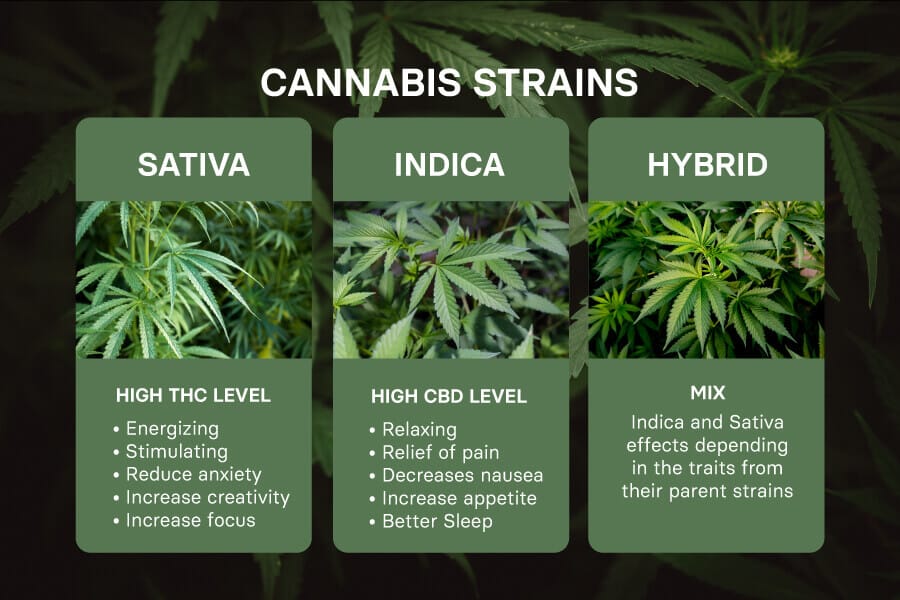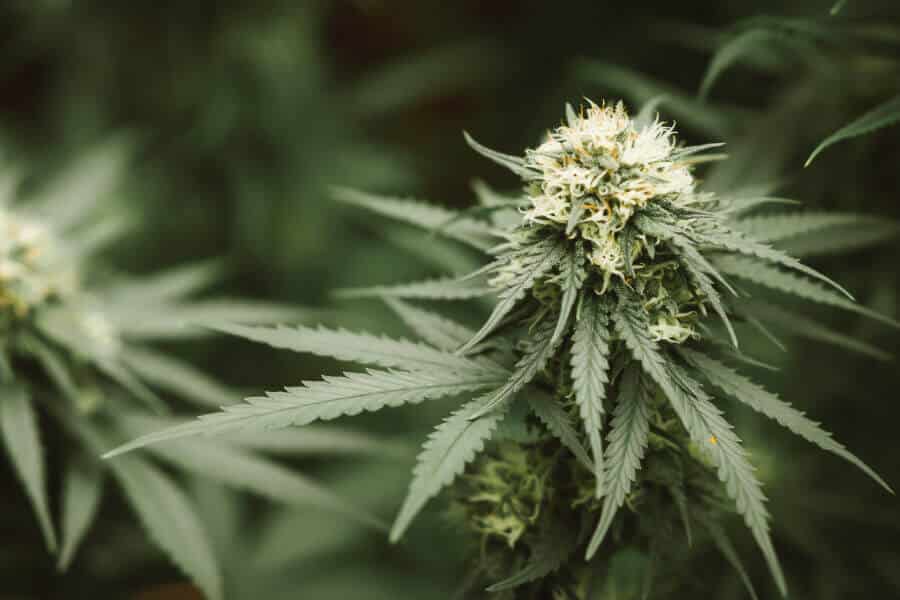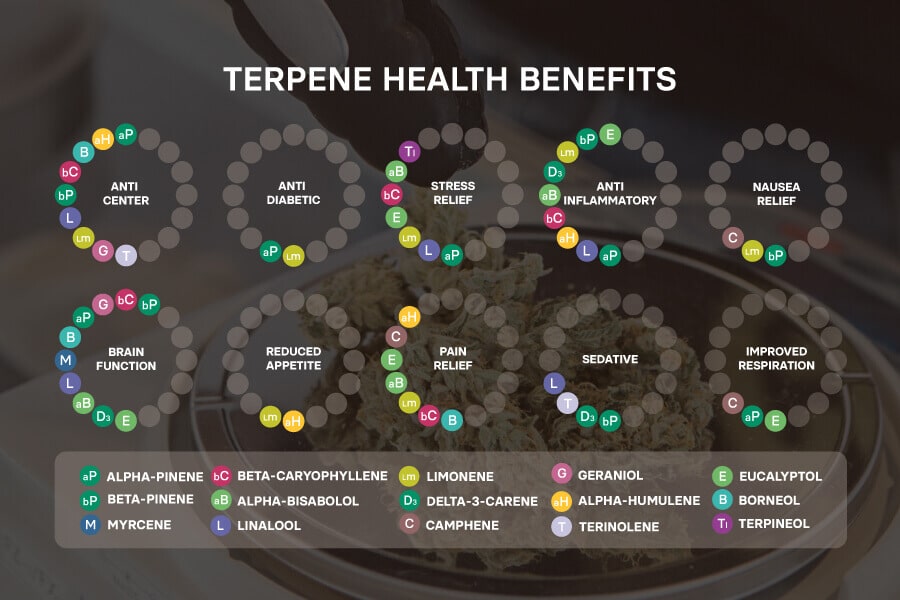Weed shops across Thailand sell marijuana labelled as cannabis indica, cannabis sativa, or hybrids. So whether you are buying Gorilla Glue, Great White Shark, Sour Krunch, or Dinamed CBD, they will be categorised into either of the three categories.
On paper, each of these has different effects – and budtenders use these labels to highlight the kind of experience you will have.
The bigger question, however, is whether it is accurate or just a marketing gimmick. In this article, we will highlight the differences between cannabis sativa, indica, and hybrids – and why this system of buying weed may not be as accurate as you think.
Cannabis Indica vs. Cannabis Sativa: A Quick Snapshot

As you may know, indica weed strains are known to be more relaxing, sedating, and sleep-inducing; it is something you take after a long day at work to kick back, relax, and unwind. Sativa, on the other hand, is more on the other side – it is uplifting and stimulating. People generally take Sativa buds for a mental high – to spark their minds for creativity and boost their focus to get things done.
As for hybrids, they are a combination of the two – featuring the best of both worlds.
Here’s a quick table that gives you an outlook of the key differences between the two strains.
| Cannabis Sativa | Cannabis Indica | |
|---|---|---|
| Appearance | Slim plants, tall (15-20 feet), skinny, light green thin leave | Short, bushy plants (5-10 feet), dark green broad leaves |
| Origin | Warm, equatorial regions like Thailand, parts of Africa and Central America | Cold climates such as Afghanistan, Northern India, and Central Asia |
| Growing Period | 60-90 days; well-suited for outdoor growth, low yield | 45-60 days; recommended for indoor growth, higher yield |
| When to Use | Daytime use | Nighttime use |
| Effects | Mental high, alertness, creativity boost, increased focus & energy, uplifting & stimulating | Body high, relaxing, sedative, stimulates appetite, pain relief, muscle relief, sleep aid |
| Possible Uses | Nausea, depression, anxiety | Insomnia, pain |
However, these features are not fully backed by science; if anything, you can experience these effects with either of the two strains! An indica strain can give you a mental high and keep you up while smoking a sativa-flower joint can put you to sleep. It all varies from person to person, among a few other things.
Here is a fun fact – in the 1999 Cannabis Cup – a popular weed competition in Canada, a strain named AK 47 won the Sativa Cup. The same strain moved on to win the Indica Cup in competition four years later.
It is important to note that botanists have used these labels to identify the physical characteristics of the cannabis plants – size, the shape of the leaves, branching patterns, flowering periods, origins – to make classification easier.
The effects and experience caused by weed are not dependent on whether it is sativa or indica, but more inclined towards their chemical composition – also known as the chemovar approach. More on that later. For now, let us look at what separates indica and sativa.
Physical Characteristics
Right off the bat, you can easily spot the differences between sativa and indica plants.
Sativa plants are tall; they can grow up to 20 feet – much taller than their indica counterparts. Their leaves are thinner and have fewer branches. They appear more ‘branched out.’
Cannabis sativa comes from dry, hot climates where the sun is out for a long time. Common regions are Central America, parts of Africa, and Asia. These take a long time to grow and produce buds; a good sativa strain can take up to 16 weeks to finish the flowering stage. This is due to the increased exposure to sunlight – which means they take their time to produce the sweet buds that get you the mental high.
Some of the well-known sativa strains are Sour Diesel, Green Crack, Lemon Haze, and Charlotte’s Web.
By contrast, cannabis indica is short and has a bushy appearance. Since they do not grow to be that tall, they are perfect for indoor growers. In addition, the leaves are thicker, and the branches are closely clustered.
The indica buds originated in the northern, cold climates of India, Pakistan, and Afghanistan and then spread elsewhere. They do not require that much sunlight and have a far shorter flowering period; an indica plant can give buds as early as eight weeks. They are also easy to grow, and the yield (output) is much more than sativa.
To list some popular cannabis indica strains, we have Northern Lights, Ice Cream Cake, Granddaddy Purple, and Purple Punch.
Effects
Cannabis sativa is associated with mental and cerebral effects. Smoking a sativa strain like Sour Diesel or Lemon Haze will give you the psychoactive high on which you can get things done. Whether it is work, painting, or something creative – sativa is commonly associated with helping you channel your mind and focus. This is mainly due to the belief that sativa strains contain a much higher concentration of THC (tetrahydrocannabinol).
For the same reason, however, sativa buds can also cause increased paranoia and anxiety in some users. Therefore, sativa flowers are generally recommended for daytime use.
On the other hand, cannabis indica is more suited for night-time use. It can help you relax physically and improve your sleep quality. Indica buds are often associated with the ‘body high’ effect wherein you are effectively glued to your couch.
Indica strains are recommended for sleep, mental relaxation, pain relief, easing inflammation, and reducing nausea. These effects are believed to emerge from a higher concentration of CBD (cannabidiol) in the flowers.
Cannabis Hybrid
Hybrids are a combination of sativa and indica – and their effects will vary mainly on how the plants have been bred and their parent strains.
You can have indica-dominant hybrids – where the effects of indica buds are more prominent, sativa-dominant hybrids, or plain old a little bit of both.
Hybrid strains are cultivated to improve the yield and growth times and produce effects more suited to the requirements. Of course, growing them requires some expertise, but this is also where there is plenty of room to experiment. For example, you can theoretically have a bud that will give you the mental high to get things done – while easing your pain.
Popular hybrid flowers in Thailand are Black Cherry Punch, Emergen C, Charlotte’s Angel, and Sour Krunch.
Fun fact: Every single bud you have smoked so far in your life is most likely a hybrid.
Moving Towards a Different Classification

Earlier in the article, we mentioned how the current classification of indica and sativa to identify the effects is not the best way forward.
This is because sativa and indica terms only point to the physical differences. Buying an indica strain with the idea of relaxing sleep may have the opposite effect, as it may have a fair bit of THC, which will keep your head spinning in bed
The cannabis industry in the West is moving away from this, towards the chemovars way. Broadly put, this means categorising weed depending on their chemical composition, makeup, and what they contain. This means looking at:
- The amount of THC and CBD in the plant
- The terpene profile – what terpenes they contain
To be more precise, the buds can be categorised into three tiers:
- Type 1: high THC content
- Type 2: THC/CBD in equal parts
- Type 3: high CBD content
This is also how the Thai government has officially classified cannabis – notably Hang Kra Rog Phu Phan ST1, Hang Suea Sakon Nakhon TT1, Tanaosri Kan Khaw WA1, and Tanaosri Kan Daeng RD1. The wording may be different, but they are on the right path – to start looking at weed more from the perspective of what they contain.
Terpenes – Why do they Matter?

We have spoken about terpenes in great detail here. Still, if you are curious, they are aromatic compounds produced by flowers and plants. It gives the cannabis plants their unique aroma – pungent, skunky, flowery, citrusy, etc. The plant has them to attract pollinators or even keep insects and predators away.
In the context of weed, terpenes play a role because of the entourage effect.
According to the research – which is still growing – terpenes can influence your ‘trip’ to a great extent. To borrow an analogy:
If an indica or sativa strain is a car’s engine – packed with cannabinoids, then terpene is the driver behind the steering wheel – controlling where and how the car goes.
For instance, an indica strain with myrcene (a common terpene associated with calming, soothing properties) may help you sleep better than the same strain with a different terpene – say limonene or pinene – which are more geared towards mood-altering and uplifting effects.
Terpenes by themselves cannot get you high like cannabis plants. Still, they can help your body – your endocannabinoid system – do its job better and make the most of whatever bud you enjoy.
To Conclude
Classifying cannabis as sativa, indica, and hybrids is the old way. It is best suited to point out the physical differences, but beyond that, we must not rely on them as a way to measure the effects. Truth be told, the only way to find out what effect a bud can produce is through a thorough chemical composition analysis – to identify the concentration of CBD, THC, other cannabinoids, and terpenes.
As a buyer, you must look at the THC/CBD ratios and terpenes profile to gauge what kind of a trip you will have and then go from there. Luckily, many weed shops in Thailand are moving towards this, including Bloom! So check out our offerings and see for yourself.










